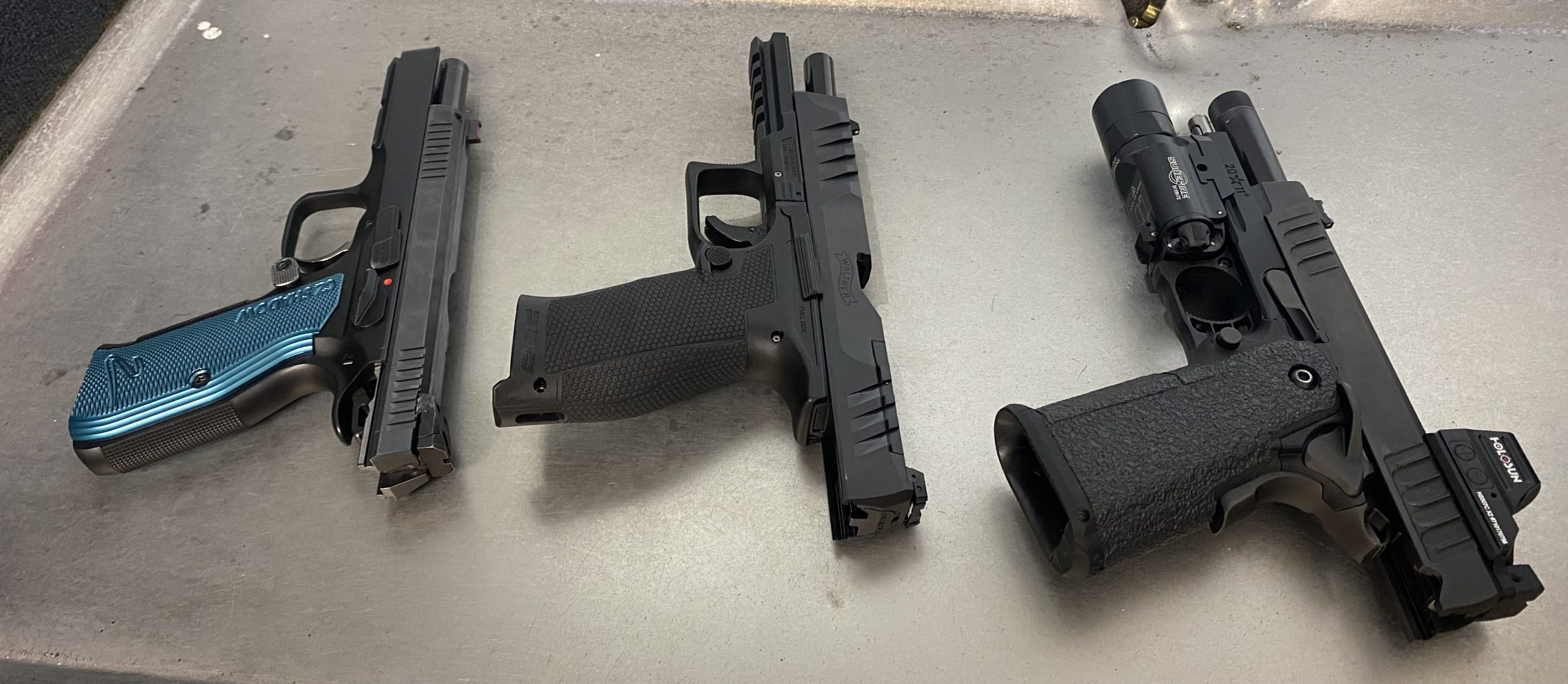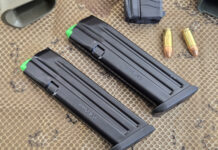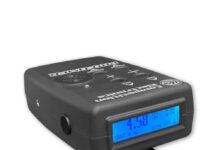Cover Photo: 3 of the guns on this list during their first range session. Scroll down to see the other two.
I took the time to compile a list about five different pistols that left an impression on me in 2023. In no particular order, these guns are the Glock 22, Taurus 856, CZ Shadow 2, Walther PDP and Staccato-P. Besides their original review, I also spent additional range time shooting these guns, often times at matches or training sessions. I named these guns in my list because either I really enjoyed shooting them, or I think they have something to offer to the industry (or both). My average round count across this list is approximately 500 rounds. With exception to the Taurus or Glock, the other three guns spent much time on my match belt this year.
Glock 22 Gen 5

Back in the spring, I stumbled onto some .40 S&W trade-in ammo deals. One thing led to another, and I impulse bought a like-new fifth generation Glock 22 also for a deal. While I’m intimately familiar with full-size 9mm Glock models, I had very little experience with .40-caliber Glocks other than shooting a Gen3 version at an indoor range some 15 years ago. Even though I was brand new to shooting then, I still recall that particular Glock 22 being snappy and unpleasant to shoot. It turned me off from .40 S&W completely. Years of seeing memes making fun of this cartridge and its shooters didn’t help either. Being in the firearms space, I’m well aware of the historic issues that Glock had with its earlier G22 variants and the .40 S&W. That’s why the first time I took out my new Gen5 Glock 22, I did so with no expectations. Had it not been for those deals on that trade-in ammo and my designs of potentially shooting Limited Major on the cheap, I’d probably never care about .40 S&W at all. After my first 100 rounds, I was very pleasantly surprised with this “improved” Glock 22; I found it to be quite accurate and controllable. What sealed the deal was nailing impacts dead on at 25-yd with 180-grain Federal HSTs at 25 yards. Certainly, some of this new Glock’s magic can be attributed to the suite of fifth-generation upgrades found on all current production guns. Shooting the new Glock 22 was a night and day difference between the one I shot fifteen years ago; those older guns were basically Glock 17s adapted to chamber a larger cartridge as an afterthought. The new fifth-generation model was deliberately built with respect to the .40 S&W and it really shows. Slides are a little bit thicker and heavier (and rightly so). Training with it last week under the pressure of a shot-timer, I hardly noticed the extra recoil or anything like that.
I won’t deny that part of the fun and enjoyment in shooting the fifth-generation Glock 22 comes from it being something other than a 9mm or .45 ACP. The .40 S&W cartridge gets a bad rap, but looking at the caliber’s own numbers, I don’t think there is anything to trivialize about it. It’s true that from a whiz-kid bean counter perspective the 9mm Luger still edges it out, but that doesn’t take into account surplus trade-in deals or the value of keeping a spare handgun in an alternative chambering. Besides that, it’s hard to feel undergunned when carrying an accurate pistol with a 16 round capacity chambered in a major caliber. That older Glocks or other makes and models weren’t fully optimized to handle the .40 S&W properly isn’t the cartridge’s fault either. It’s no different than trying to sprint with ill fitting shoes. And the .40 is alright. I can’t wait to have some fun shooting Limited Major with it when the chance comes up.
Taurus 856

While Taurus makes revolvers in all sizes and calibers, the .38-caliber Taurus 856 is a standout; their frames are only slightly larger than those of classic Smith & Wesson J-Frames while also holding an additional round in their cylinders. The Taurus 856’s overall size is probably the most relevant frame size for today’s revolver shooters because this size lends itself well to personal defense and carry. The Taurus 856 can be had with either 2 or 3-inch barrels and frames made from carbon steel, stainless steel or aluminum (Ultra-Light models). The 856 also holds the distinction of being the first carry revolver to ship optics ready from the factory with TORO models. Most importantly, these guns have a very affordable price and it’s my opinion that between their cost and quality, they’re helping to keep the revolver relevant today.
I own two different Taurus 856 revolvers, a 2-inch snub and a 3-inch carry gun that I purchased locally at a big box outdoor store. I bought them specifically because of my gun-writing, and my matte black snub 856 has been featured in several pieces throughout 2023. 80% of my revolver-centric live and dry-fire has been subjected on that black snubbie, and I honestly haven’t been very kind to it. This is the revolver I carry in my Dark Star Gear Apollo and the revolver I outfitted with the XS Sights Dot front sight. I treat it like a Glock. I carry it, sweat on it and shoot-and-dry-fire the crap out of it. And honestly? This revolver is holding up quite well. In fact, its trigger seems to smoothen out and improve with more use. Admittedly, part of the reason I’m hard on it is because it’s affordable. The irony of this is that I wouldn’t “mistreat” a more expensive gun this way. But how else is one supposed to find out if their gear actually holds up? After shooting the majority of my .38 Special cartridges through these Brazilian revolvers in 2023, I’m very satisfied for their cost to performance ratio.
*Don’t actually treat your revolvers like a Glock. All of them do need extra attention and babying and more cleaning in between rounds fired compared to your typical contemporary 9mm pistol. But it’s true that I don’t baby my 856.
CZ Shadow 2
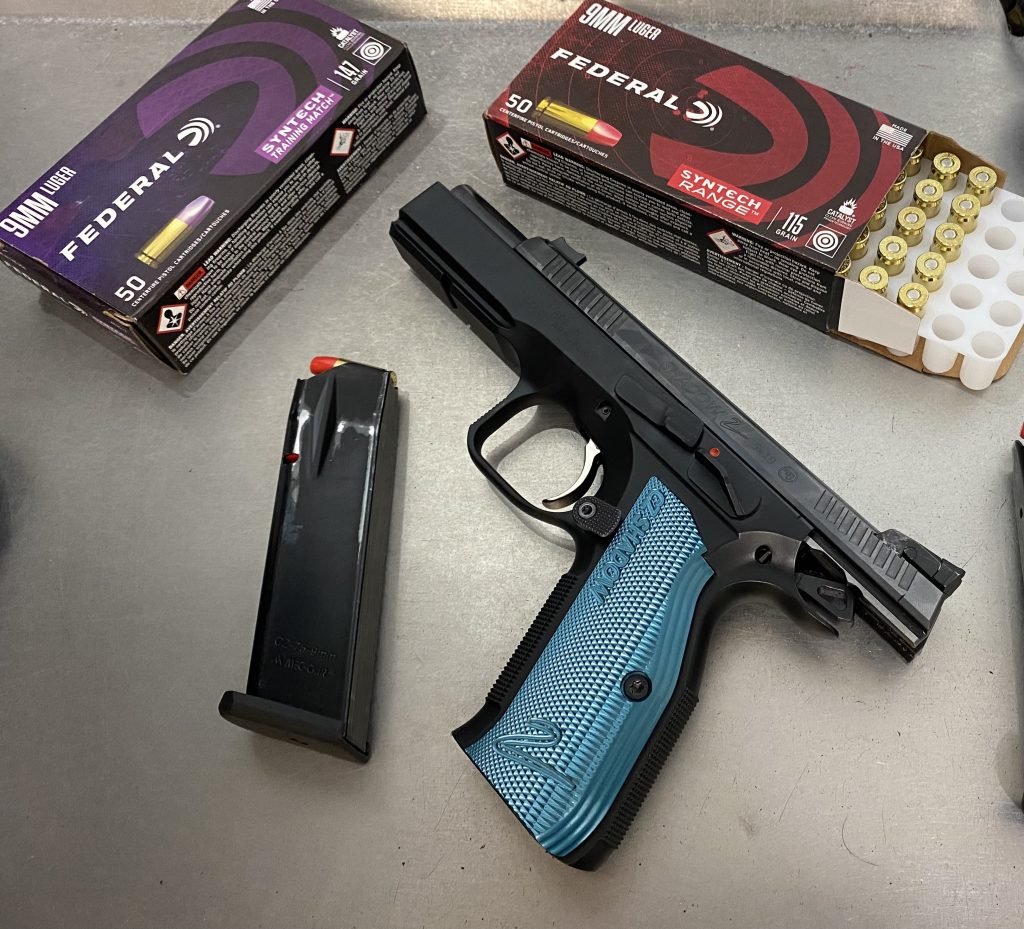
The CZ Shadow 2 is the the undisputed king of sport pistols for action-shooting pistol games. The Shadow 2 isn’t a new pistol by any means, and its original launch date is soon coming up on ten years. At the aggregate level, the Shadow 2 is basically a plain old CZ-75 with “running shoes” so to speak. Many can argue that the true king of sport pistols is the 2011, and they’d probably make some good points. However, I’m of the opinion that the real king is the Shadow 2 because it offers excellent accuracy, tracks very flatly, has a heavy recoil absorbing steel frame and can be tuned for cutting edge performance. But most importantly, the Shadow 2 is more affordable and accessible than most competition grade 2011s, and that counts for something. For every SVI I see, I see ten Shadow 2s at a match. In fact, their standard retail prices even came down by a few hundred bucks this year. These CZs also enjoy an extremely robust aftermarket full of accessories, improvements and other go-fast parts. People aslo love to mill them out for USPSA Carry-Optics and now CZ offers an optics-ready SKU. Out of the box, the Shadow 2 can be shot in either Production, Limited, Standard (IPSC), Carry Optics (OR/milled versions) and Limited Optics (OR/milled versions). In other words, this 9mm competition pistol is competitive by default in damn near everything except Open division. I doubt it’s going away any time soon.
Ironically, I had never fired or handled a CZ Shadow 2 until April of this year. These guns are incredibly popular at my local USPSA club and after seeing so many Shadow 2s in so many holsters, I started asking my friends at the club if I could dry-fire their guns at the safe table. Eventually I got to shoot one too, and then I bought my own; used, with my tax return money. Mine is a standard “blue” Shadow 2 that was made in 2018 and was barely broken in with a few hundred rounds. Using Federal 124-gr Syntech 9mm, I’ve shot some of the best iron sighted 25-yard B8 freestyle groups of my life with it. I also remember my first match with this pistol, where I was competing under Limited Minor. My club is extremely competitive and I didn’t win, but I specifically remember how flat the Shadow 2’s slide tracked and how that made me more confident in my match shooting. Initially, I recall calling shots that I thought were charlies snd deltas that ended up being alphas, so I started pushing more and becoming more aggressive with this pistol. The Shadow 2 became an instant favorite.
Walther PDP
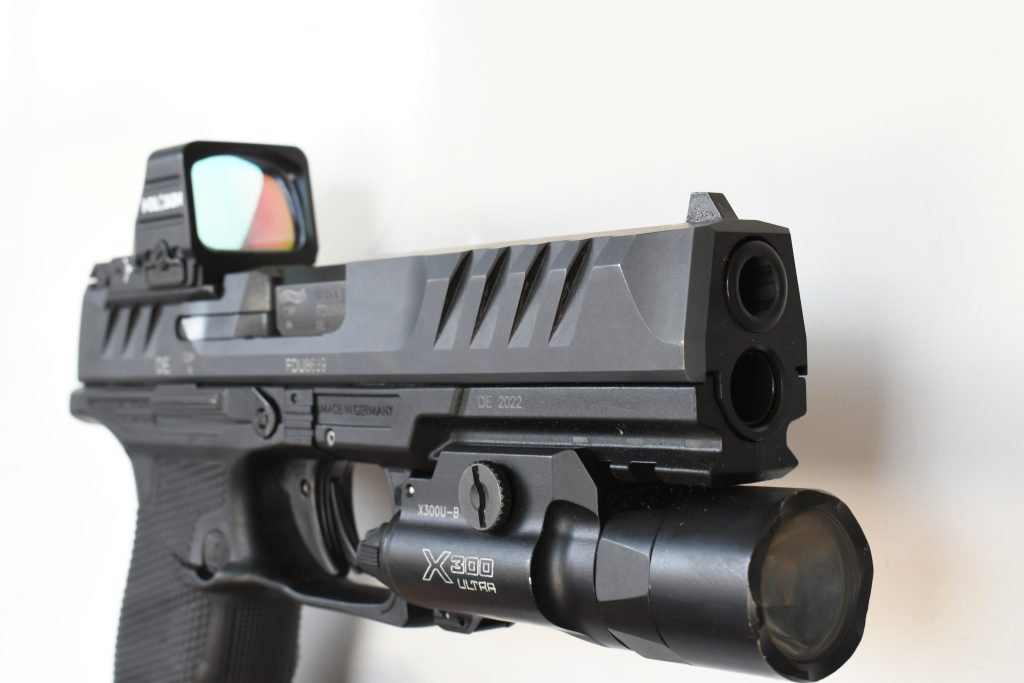
I’ll fess up to my soft-spot for the Walther PDP because I’ve also done some of my best-ever shooting with mine this year. It’s also the gun that helped me get used to shooting with dots more than any other pistol. This polymer frame striker fired 9mm handgun is the storied German gun company’s flagship model, and it’s also what I’d consider an extremely modern pistol because it was built from the ground up to be symbiotic with mounted optics. I predict that this trend will become more common as other brand new handgun models make their way into the industry for the first time simply because the popularity of mounted pistol dots is exploding exponentially. All PDP variants are optics-ready by default and include a fairly deep slide cut so that mounted optics can sit lower than is customary. The standard Walther PDP can be had with different barrel lengths (4″, 4.5″ and 5″) and frame sizes (full-size and compact). Because they all use the same working parts, all frames and slides are interchangeable. In addition to being optics-ready, these guns have remarkably good stock triggers with a very crisp and precise break. Like its grandfather, the Walther P99, the PDP is also thoughtfully ergonomic and has an oval-shaped profile that fills the shooting hand rather well. As I describe in my full review, the PDP’s grip is smartly tapered allowing the shooter to better use their support hand during shooting, especially when driving a red dot.
The combination of its ergonomics, low sitting dot and easy trigger make this gun extremely easy to shoot. My gun, which is pictured above, has been wonderfully reliable with both factory and handloads. I’ve taken it to several USPSA matches, the only handgun training class I took this year, and its also the gun I use to work all of my dry-fire. The PDP’s recoil impulse always gets brought up as being “different”, whatever that means. This isn’t any other gun anyway, it is its own thing. In my experience when trying to shoot competitively or with performance in mind, the recoil impulse is never an issue. I’ve also come to appreciate how the slide tracks and returns to zero. In short, I really like this gun because it’s so easy to shoot well and hardly needs anything out of the box (other than more ammo). One thing that’s hard to deny about Walther’s pistols is how much thought they put into them. Look back at the P99 for example, which was a design ahead of its time. Similarly, that same spirit will make you appreciate all the inputs into the PDP line.
Staccato-P
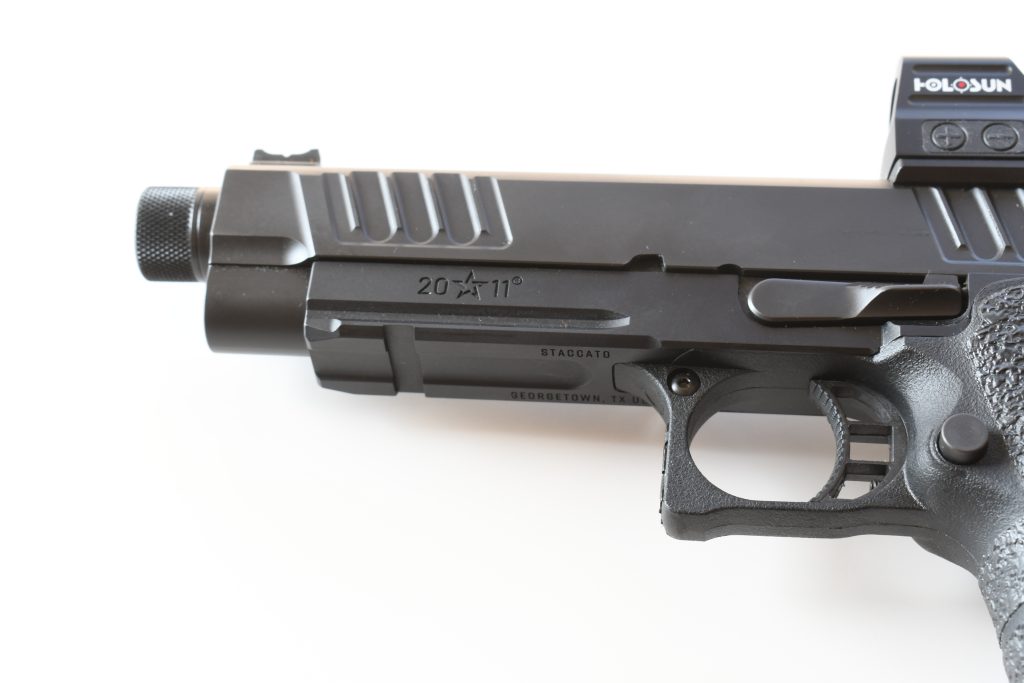
It goes without saying that double-stack 1911 or 2011s are very in these days, especially in the tactical and defensive world that lies beyond traditional realm of sport pistols. Formerly known as STI, Staccato is partially responsible as a trendsetter. Performance 2011s (also known as raceguns) can offer shooters an Icarian level of ability, but like literal race cars, these guns are impractical outside of their “tracks.” Getting that close to the metaphorical sun calls for certain trade-offs, after all. In the mid 2010s, Georgetown, Texas based STI began to morph into Staccato; instead of solely catering to competitive shooters, Staccato shifted into a company that caters to tactical/high performance duty grade shooters and concealed carriers. With this shift, Staccato also revamped their quintessential competition focused 2011 models and tweaked them into hard-use “street” guns. The end result was a distillation of the best aspects of the 2011, such as its single action trigger and incredible accuracy, but without the fickleness of its magazine or other reliability and sensitivity issues that plague match guns. 2011 magazines can be a weak point in reliability for these guns, and improving them is something Staccato has spent great efforts on. Besides a duty-appropriate single action trigger weight and reliable magazines, these guns also have other subtle adjustments that increase reliability. Finally, Staccato-Ps have a native optics footprint that’s compatible with the Leupold Delta-Point Pro, but both Staccato and aftermarket companies offer many optics mounting solutions for the Staccato-P.
This year, I had the chance to put an aluminum frame 9mm Staccato-P through its paces. There’s hardly any difference between this model and the regular steel frame model, just the 5 ounce delta in weight. My experience with the Staccato-P included several USPSA matches where I ran it as hard as I could. I cycled all manner of both factory 9mm cartridges in addition to different batches of my own reloads, and the gun swallowed everything. While it’s true that the Staccato-P gets a lot of hype, I did see for myself how reliable and how well-made these handguns are. The world of double-stack 2011s gets quite expensive in a hurry, and while the Staccato-P isn’t a “cheap” gun, it makes an excellent entry level 2011 considering what it brings to the table.

